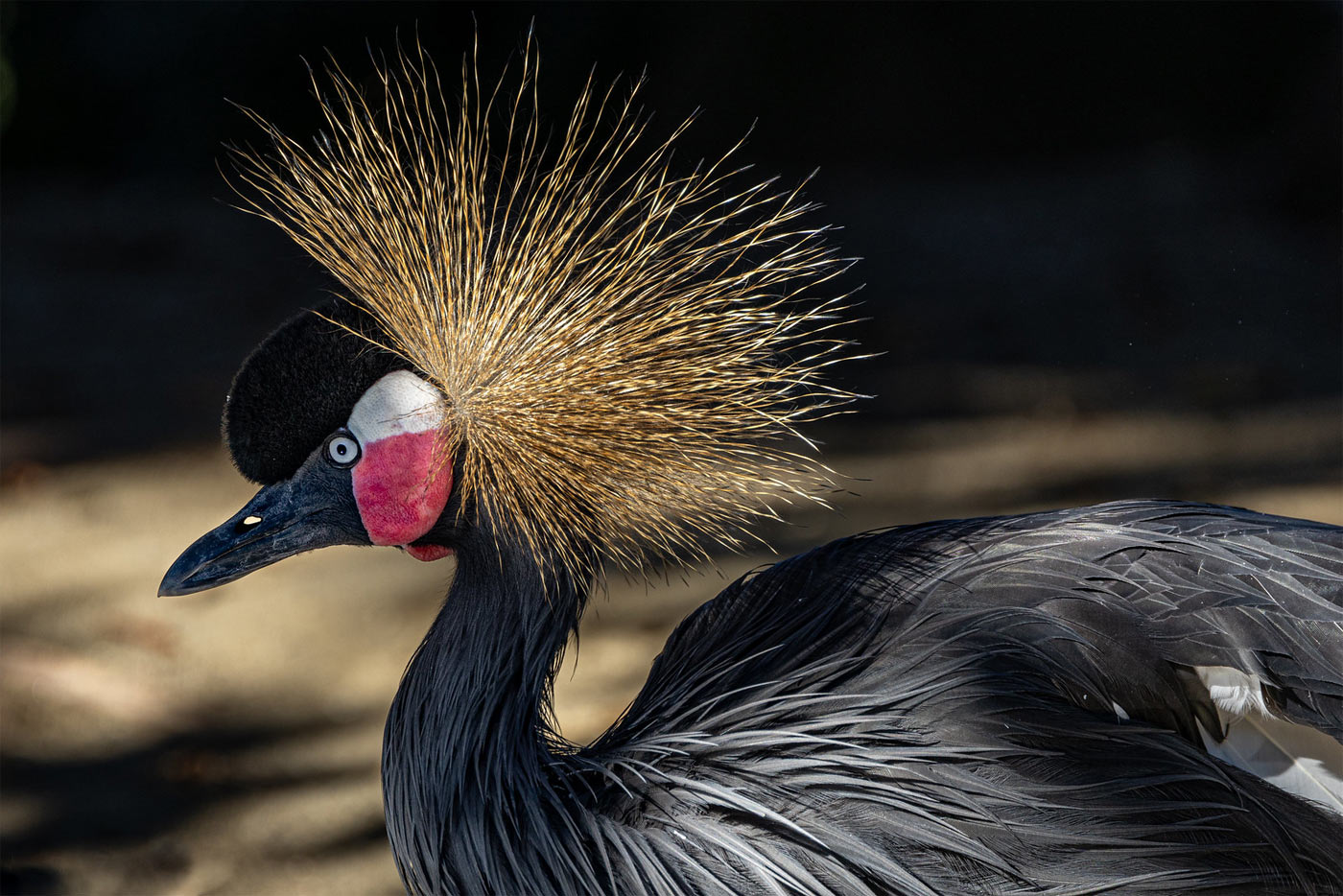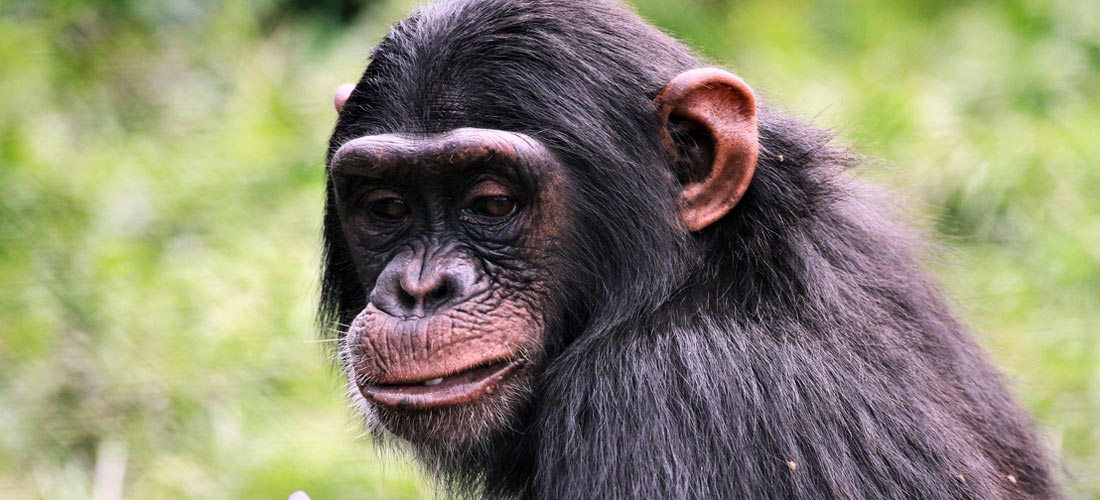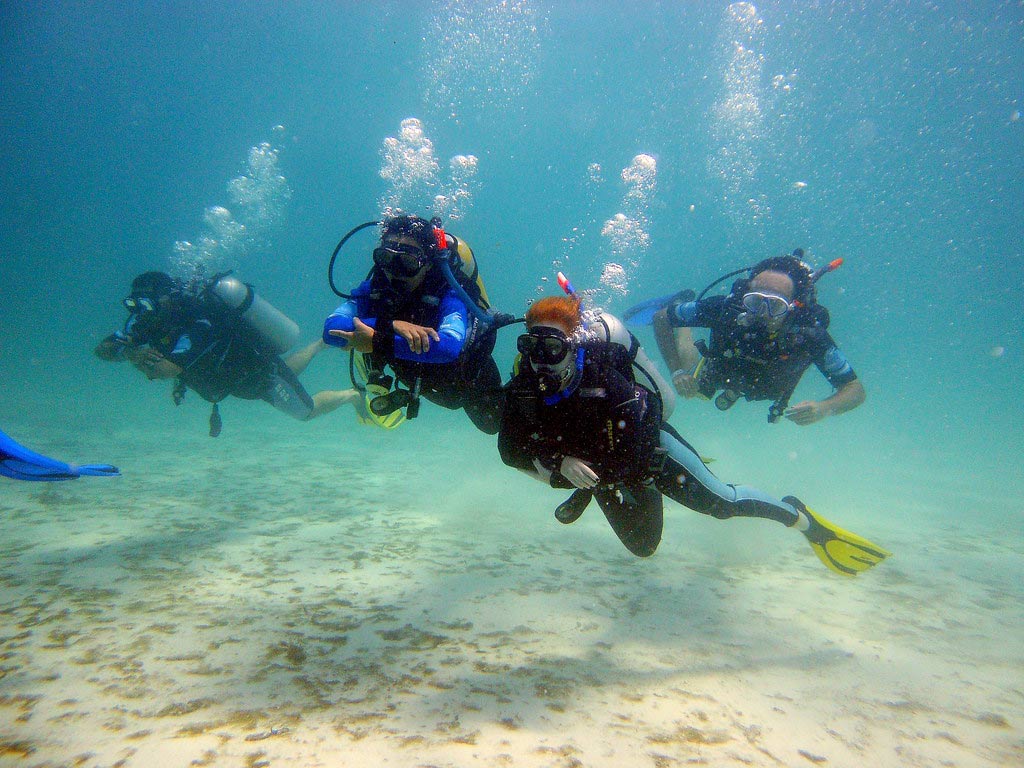The Chimpanzee trekking is another experience of high priority while touring Uganda and Rwanda. These primates have been conserved in their natural environment, forests, gazetted specially for them. Like the endangered mountain gorillas, a great deal of chimpanzees and most of the great apes have been lost in the last 500 years alone. The Ugandan and Rwandan variety (Pan Troglodytes Schweinfurthi) is long-haired and lives in those forests where there is a rich food supply throughout the year. The estimated number of chimpanzees in Uganda is 5,000. Bwindi is one of the few forests where gorillas and chimps co-exist but are rarely seen as they live lower down when both species are present.
What to see?
On a chimp tracking adventure, you will observe the way they feed, climb trees, play, take care for their young ones and how they respond to humans. Several families have been habituated to the human presence. While trekking the apes, you will see large populations of different species of primates, like the black and white colobus monkeys, red tailed monkeys, blue monkeys, golden monkeys, and bush babies.
Where to go for Chimpanzee tracking in Uganda?
Kibale Forest National park is possibly the park with the highest primate concentration protection Area in Africa. The park boasts of thirteen species of primates consisting of the chimpanzees, the blue monkeys, black and white colobus monkeys, galagos, Red colobus monkeys, baboons, among others.
Ngamba Island Chimpanzee Sanctuary is found 23 Kilometers off shore from Entebbe on Lake Victoria, located on a beautiful forested island and is home to approximately 40 chimpanzees rescued from poachers and other forms of private captivity. The semi-wild environment allows for close viewing of the animals in their natural habitat. Optional extra: a day’s forest walks with the mischievous chimps as they play in the forest.
Budongo Forest in Murchison falls
Kanyio Pabidi eco-tourism site in Budongo Forest is an excellent place to see the chimpanzees. Enjoy a guided primate trek searching for chimpanzee families. You may also spend a full day in the life of the apes with our Chimpanzee Habituation Project. The habituation experience involves you watching the chimps leave their overnight nests very early in the morning between 6:00 – 6:30am before feeding, then see them copulating, hunting, breastfeeding, resting, patrolling and playing until it is time to build new nests around 7pm. Budongo Forest is also a delight for bird watchers thanks to the really high concentration of birds as well as the rare species like the Chocolate-backed Kingfisher and the Paradise Flycatcher.
Kyambura Gorge in Queen Elizabeth National Park
While going for the drive to Kyambura gorge for a forest walk, it is always advised to pack lunch. The forest has habituated chimpanzees and other primates. This gorge is 16 km long on the Rift Vahlley and 100 meter deep. Be equipped with walking sticks for support as this spectacular trekking can get slippery.
Semliki National park
While in Semliki park, you will set off downward into the forest bordering the Nyabaroga Valley to track chimpanzees. The trekking usually takes place at dawn or dusk for the reason that these apes have a tendency to disappear in the middle of the day. Several bird species are also found the game reserve.
Kidepo National Park is also a home to these primates.
Where can I visit the Chimps in Rwanda?
Chimpanzees, along with 12 other species of primates, can be found in the massive afro-montane forest of Nyungwe in southern Rwanda, the largest mountain forest in Central Africa.
How do Chimps live?
Chimps share 98% of the human genes, have large bodies with four limbs making them the closest living relative of the human species on earth. Chimpanzees give birth every four to five years and look after their infants up to the age of 10 to12 years when they are considered old enough to survive on their own. These species live in communities or families that separate at a certain stage and later join again not like the gorillas who stay together. Each community differs in culture and life styles. Chimpanzees use tools like rocks to crack nuts, sticks to fish for termites and make sponges from leaves to soak up water for drinking from hole in trees. They occasionally organize hunts to catch monkeys or small antelopes.
Conservation of Chimpanzees in?
Chimpanzees are considered to be an endangered species because they are rare and their numbers are declining rapidly across Africa. International law protects these animals because they are threatened by extinction. It is illegal to kill, capture or keep a Chimpanzee. Government in Africa have set aside land to save the remaining Apes mainly the chimpanzees in the safari parks, zoo, game reserves and Ngamba Island sanctuary. It has also set up rules to govern the chimpanzee trekking activity so that their ecosystem is conserved. These conservation areas have become famous safari destinations, since many people come from all parts of the world to see these animals. In Uganda & Rwanda the Uganda Wildlife Authority(UWA) and Tourism and Conservation Department of RDB in Rwanda assists in the rescue of illegally held animals respectively.
What are the threats to these apes?
- Chimpanzees are losing their home in Uganda. In the past 15 years, over 800 sq kms of forest has been cut down where chimpanzees live mostly.
- Chimpanzees are hunted for meat in some parts of Uganda. Most chimpanzees get killed each year for meat in Africa than all the Chimpanzees in Uganda.
- Chimpanzees are also hunted for petty trade. For every baby Chimpanzee caught in the wild, approximately 10 chimpanzees die in the process.
- The endangered species in also killed or maimed by wire traps set for antelopes in the forests. 25% of Chimpanzees studies in Uganda have injuries from traps.
The following rules apply while trekking the Chimpanzees:
- The maximum number of people in a group is 4 visitors per guided walk.
- The maximum time allowed with the chimps is one hour; the time however might be shortened under the guide’s discretion to eliminate stressful situations for the chimps.
- A distance of just about 8m is very important between you and the chimps.
- Chimps need freedom therefore no provoking them once you enter the park.
- People with diseases such as flue or diarrhea may not allowed in the park.
- Please refrain from eating near the chimps and other primates such as chimpanzee and gorilla Uganda.
- Children below the age of 12 are prohibited from entering the park.
- Carry rain gear/Rain Jacket, wear long boots that cover your toes and long trousers as there are red ants and slippery trails, a hat and sun screen as the weather is unpredictable as well as insect repellant.
- When chimp trekking you are advised to remain in a tight group and follow the guide’s directions at all times.
Please note that sightings depend on factors such as time of the day, fruit availability, weather and how quite the primate group is.








